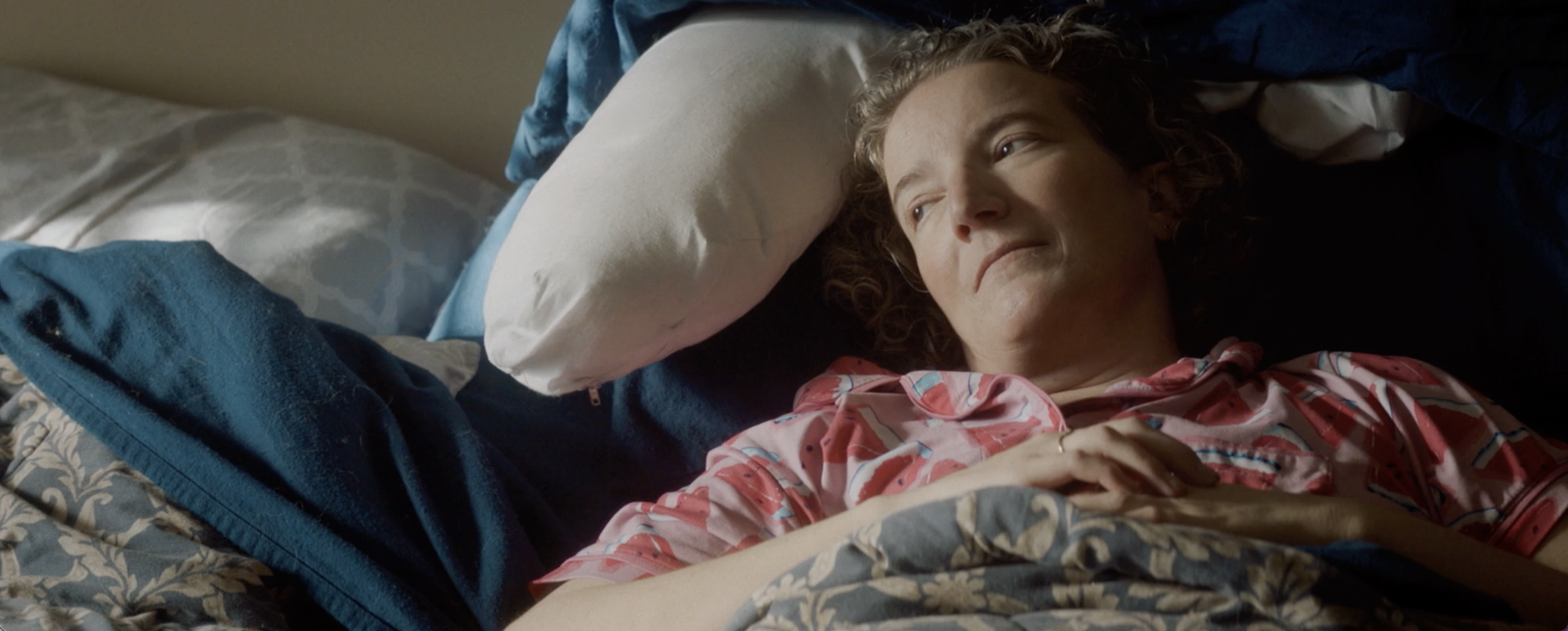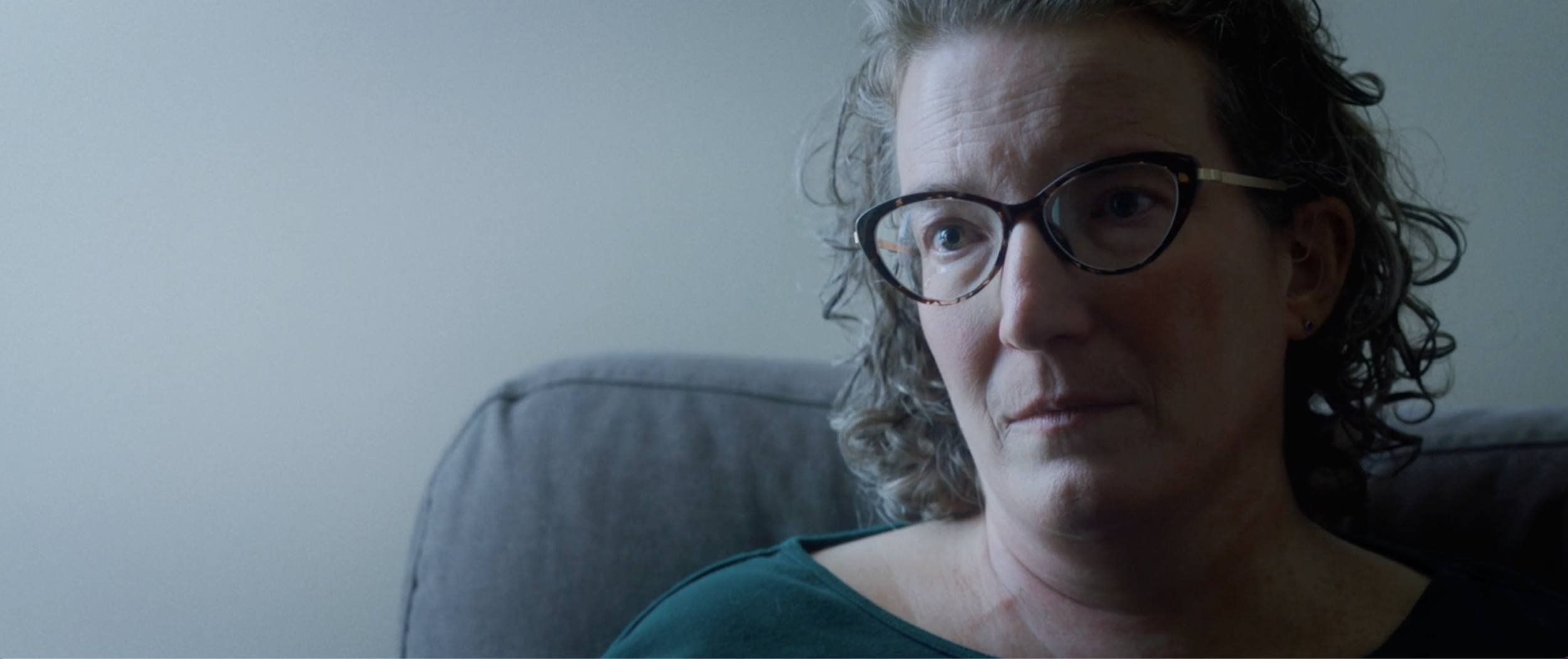Residual Splendour — A Documentary about Living with Metastatic Cancer
– written by Annoj Thavalingam
A cheery woman with a passion for travel and cars, life hit the brakes when Sarah Sellars received her stage 4 cancer diagnosis.
Just a year prior, Sarah had successfully treated her early-stage breast cancer through hormone therapy and a double mastectomy, the latter cheekily described by her husband, Glenn Coulman, as an “uninstall and upgrade.” And so Sarah and Glenn were understandably shocked to learn the cancer had returned as stage 4, or metastatic, meaning it had spread to other tissues in the body.
Sarah’s journey with breast cancer is featured in the short film Residual Splendour (2022), written and directed by C. Hudson Hwang.
Life with Metastatic Breast Cancer
About one in eight women experience breast cancer in their lifetime. Though many of these cancers can be cured if detected and treated early, one in three breast cancers become metastatic. In metastatic disease, the cancer spreads from the original breast tissue to other organs in the body. Physicians are tasked with putting out invisible fires that could crop up anywhere in the body. As Sarah’s medical oncologist, Dr. Nancy Nixon, explains, “It is a lifelong treatment because we can’t cure metastatic disease.” The focus for treatment is therefore ensuring patients live better for longer, minimising the cancer’s ability to grow, and intercepting it as soon as possible if it spreads.
Sarah’s life has been upended since the day of her metastatic cancer diagnosis. Chemotherapy treatments leave her fatigued, while the removal of a brain tumour impacted her sense of balance. Glenn also quit his job to take better care of Sarah. As Sarah explains, her main source of mental anguish comes from what she calls “scanxiety”: the waiting period between scans and their results. These results determine the next course of action for treatments, and also tell Sarah whether her cancerous cells have expanded, receded or travelled to new organs.
Screenshot of Sarah post-chemo.
Breast cancer may sound like a single disease, but in reality, cancer cells can exist in a wide variety of forms, using different strategies for growth and expansion. Some cancers, like Sarah’s, employ HER2 to multiply rapidly and uncontrollably. Others may use estrogen and progesterone receptors. Receptors are like mouths for cancer cells; they allow cancer cells to intake growth hormones from the body and grow faster.
The discovery of breast cancer cells in Sarah’s lymph nodes was problematic for more than one reason. Apart from the sobering realisation that the cancer had reemerged metastatic, the new cancer cells had mutated, expressing high levels of a gene called HER2. “I was just shocked that it had changed,” Sarah admitted. “I didn’t realize that your body could do that.”
Dr. Karen Gelmon, a medical oncologist at the BC Cancer Agency, explains, “Every cell of our body has a gene called HER2. When there are too many copies of the gene, the cell becomes revved up, and it’s like HER2 is the engine.” HER2 acts like a stimulant, encouraging the cancerous cells to reproduce more quickly, forming a tumour and potentially spreading to other organs.
Toxicity is a shortcoming of traditional radiation and chemotherapy treatments. A more targeted approach could limit the damage done to other cells in the body. Alongside chemotherapy, new medicines are being developed that exploit cancer’s growth strategies against itself, killing the cancer cells in the process. One such effective example are antibody-drug conjugates. Here, the drug can kill the cancer cells but it can’t find them on its own. The attached antibody acts like a sensor, locating and latching on to specific growth receptors. So the antibody does the search and find, and then the drug enters the cancer cell to kill it.
Treating HER2-positive Cancer
Knowing Sarah’s cancer type was HER2-positive allowed for a targeted form of treatment called anti-HER2 chemotherapy. This treatment specifically targets the HER2 receptors on cancer cells, selectively killing the cancer cells while reducing the impact to non-cancer cells.
Despite the side effects of the treatment regimen, Sarah and Glenn find moments of joy where they can. While Sarah no longer feels capable of driving their small collection of sports cars, they find comfort with regular night-ins with popcorn watching the beloved British car show Top Gear.
Documenting Sarah’s Story
The anecdotes captured in Residual Splendour bring to light the value of emotional support when living with cancer. Director C. Hudson Hwang has maintained an interest in educating the public on managing chronic diseases through other documentary shorts focusing on type 1 diabetes and Crohn’s disease. While exploring the educational gaps for patients experiencing these conditions, Hwang noticed repeatedly that there was a lot of confusion surrounding metastatic breast cancer. “It’s probably one of the most challenging [diseases] that requires a tremendous amount of psychological support,” he recalls, crediting that experience as what prompted him to tell Sarah’s story.
Screenshot of Sarah.
Yet Hwang initially did not want to direct this film. “I thought [the documentary] probably needed to have the perspective, care and insight from a female director,” he explains. It was Sarah who insisted on him staying on to direct the film after the two worked together to develop the story.
In the end, Residual Splendour succeeds in bringing the science of metastatic cancer to the forefront, while weaving in Sarah’s personal experiences with the disease. “There’s definitely a lot of misinformation out there,” Sarah points out. “There is good information, but you got to be able to find it.”
Or as in Hwang’s case, you can also create it.
Watch the Full Documentary Here
Watch our Q&A
RCIScience brought together the filmmakers, doctors and researchers for a Q&A after an online screening.



